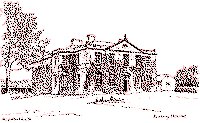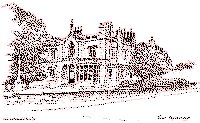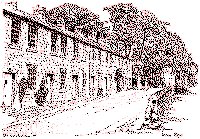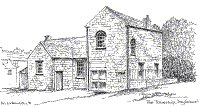Notable Buildings
_The five drawings of Old Burley are by a Northern Artist, Eric
Wostenholme, of Kirkham, Lancashire, who donated these drawings to the
Burley Community Council
Lecture Hall
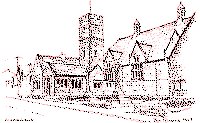
_Originally known as the Lecture Hall, it was built in 1868 by the then
mill owners, Fison and Forster, whose initials can be seen carved in the
stone over the large window nearest to the Red Lion. The hall was built
to provide recreational and educational activities in the village.
Greenholme Mills School used the section of the hall, now known as the
Annexe, until 1897. The two stone celtic crosses in front of the hall
commemorate Fison and Forster.
